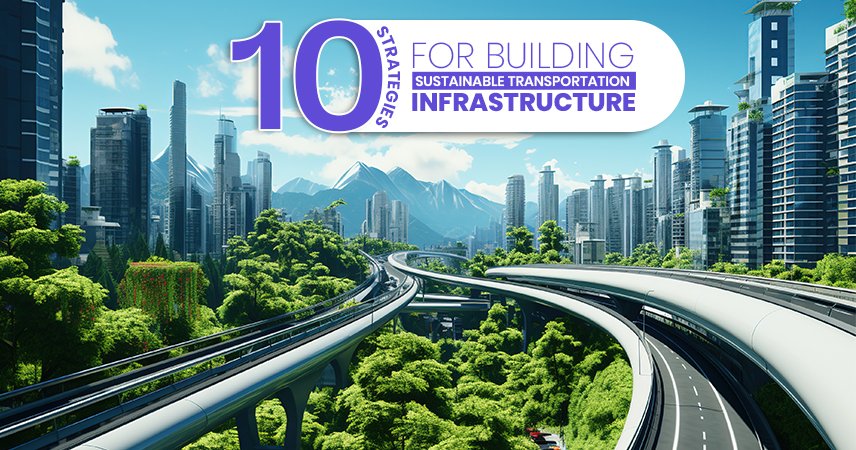10 Strategies for Building Sustainable Transportation Infrastructure

In today’s world, the development of green transportation infrastructure is crucial for mitigating environmental impact and promoting sustainable development. Our current transportation systems face challenges such as traffic congestion, air pollution, and reliance on fossil fuels. However, by investing in green transportation solutions, we can pave the way for a cleaner and more efficient future.
Investing in Renewable Energy Sources
One of the primary steps towards green transportation infrastructure involves harnessing renewable energy sources like solar and wind power. By integrating these sources into our transportation networks, we not only reduce dependency on fossil fuels but also lower carbon emissions significantly. Solar-powered charging stations and wind-powered transport hubs are innovative solutions gaining traction globally.
Promoting Electric Vehicles (EVs)
The widespread adoption of electric vehicles (EVs) is another cornerstone of green transportation. Governments can incentivize EV purchases through subsidies and tax credits, making them more accessible to the public. Moreover, developing an extensive network of EV charging stations is crucial for encouraging drivers to switch to electric, ensuring convenience and range confidence.
Enhancing Public Transportation
Improving public transportation systems is essential for reducing individual car usage and traffic congestion. Investments in expanding metro lines, light rail networks, and bus services not only enhance urban mobility but also reduce emissions per passenger kilometer. Smart technologies can further optimize public transit operations, improving efficiency and reliability.
Developing Bicycle and Pedestrian Infrastructure
Building infrastructure that supports cycling and walking is vital for promoting sustainable transportation modes. Designated bike lanes, pedestrian-friendly streets, and safe crossings encourage people to choose active transportation options. Cities worldwide are increasingly investing in these initiatives to create healthier and more livable urban environments.
Implementing Green Parking Solutions
Traditional parking structures contribute significantly to urban heat islands and environmental degradation. Green parking solutions involve designing eco-friendly facilities equipped with features like green roofs, solar panels, and permeable surfaces. These innovations not only reduce carbon footprint but also enhance urban aesthetics and biodiversity.
Adopting Sustainable Materials in Construction
The construction industry plays a crucial role in infrastructure development. By using recycled and sustainable materials in road construction and building projects, we can minimize resource depletion and environmental impact. Sustainable practices such as LEED certification for infrastructure projects ensure that our built environment aligns with green goals.
Encouraging Telecommuting and Remote Work
The shift towards telecommuting and remote work has profound implications for transportation demand. Policies that support flexible work arrangements reduce the need for daily commuting, thereby alleviating traffic congestion and lowering emissions. Employers can play a pivotal role by embracing remote work options and promoting sustainable commuting practices among employees.
Creating Green Urban Planning Policies
Effective urban planning is fundamental to fostering sustainable transportation. Cities designed for walkability, mixed land use, and efficient public transit systems promote sustainable mobility choices. Integrating green spaces, urban forests, and green infrastructure into city planning enhances environmental resilience and quality of life for residents.
Fostering Community Engagement and Education
Public awareness and community engagement are essential for the success of green transportation initiatives. Educational campaigns can educate the public about the advantages of choosing sustainable transportation and promote changes in behavior. Engaging communities in planning processes ensures that local needs and priorities are addressed, fostering collective action towards sustainability.
Conclusion
In conclusion, developing green transportation infrastructure is imperative for addressing environmental challenges and creating sustainable urban environments. By investing in renewable energy, promoting electric vehicles, enhancing public transit, and adopting sustainable construction practices, we can build a future where transportation is efficient, clean, and accessible for all. It is essential for governments, businesses, and communities to collaborate and prioritize green solutions to achieve lasting environmental benefits.



